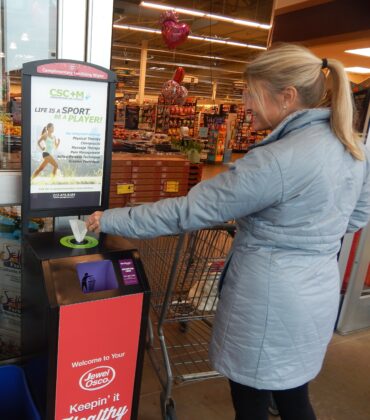In 2020, preventive cancer screenings plummeted by as much as 94%, leading to what the National Cancer Institute estimates to be 10,000 excess deaths from breast and colorectal cancer alone.
With the worst of the pandemic over, patients are going back to in-person appointments and there’s an urgent need for oncologists to effectively reach them.
This article will detail the best marketing strategies for expanding your practice to reach those in need, so let’s get started!
Oncology Marketing Strategies
Digital Transformation
A stunning 82% of Americans use search engines when looking for healthcare providers in their area. In our increasingly digital landscape, oncologists can’t afford to overlook their practice’s digital presence.
Here are the three most important categories for polishing your online presence to reach more patients:
Website Optimization
When creating an oncology website, realize that most people viewing your site will have recently received a cancer diagnosis for themselves or a loved one and will be frantically seeking a solution. As such, it’s essential to make your treatment information highly visible with a user-friendly website and easy-to-navigate menus.
Another important factor to consider is that consumers are increasingly using their mobile devices to search for local products and services. In fact, one study found that 61% of mobile users are more likely to contact a local business with a mobile site. Since first impressions are everything, you must optimize your site for both desktop and mobile users to appeal to both groups.
Cancer diagnoses are serious, and prospective patients want to be sure that they are receiving the best care possible. This is why many oncology websites feature virtual facility tours in addition to AI chatbots that can answer questions and direct users. You could also create a page on your website where interested patients can schedule a telehealth appointment to learn more about treatment options.
On-Page SEO
By conducting on-page search engine optimization, you increase the likelihood that your practice will show up in search listings relevant to your oncology practice. The first step is to perform keyword research on what your target audience is most likely to type in when seeking cancer treatments. These keywords could be things like “cancer care”, “cancer screening”, or “signs and symptoms of cancer.”
Once you have your list of keywords and phrases, place them throughout your titles, meta descriptions, and content. To further boost your online presence, it’s a good idea to produce informative blogs and articles on topics like “The Importance of Early Detection” or “Managing Cancer Treatment Side Effects”. Remember to use your SEO keywords throughout these blogs and articles.
Informative articles are more likely to be organically shared among internet users, but there is another significant upside. Search engines like Google favor businesses with perceived Expertise, Authoritativeness, and Trustworthiness (E-A-T). So, by publishing articles and blogs, Google will recognize you as a public educator and reward you for it.
Off-Page SEO
86% of consumers use Google Maps when looking for local products and services, meaning it’s essential for oncologists to maximize their presence on the platform. When potential patients search “oncology care in [location]” or “breast cancer treatment near me”, you want your practice to be among the first listed.
To optimize your practice for Google Maps, create a Google My Business account and claim your listing. It’s important to list your practice’s operating hours, address, and phone number as Google ranks up-to-date business accounts higher.
Another important criterion for Google Maps is the number of 4- and 5-star reviews your practice has received online. In addition to reviews left on its own platform, Google takes into account reviews left on other sites like Yelp, RateMDs, and Zocdoc. Your practice can certainly generate 4- and 5-star reviews through excellent service, but it is more efficient to actively request your patient base to leave online feedback.
Paid Advertisement
There are a variety of advertising mediums that oncology marketing strategies can put to use. However, some are far better than others. So, let’s detail the physical and digital marketing mediums that will be most effective at reaching new patients and growing your practice.
Wellness Boards
Traditional marketing mediums, like highway billboards and transit displays, are great at boosting general brand awareness but are incapable of targeting consumer groups and tracking engagements.
Wellness boards dispense sanitizing wipes from below a prominently featured advertisement and are one of the few physical channels that can effectively target audience segments and track engagements.
Healthcare marketing campaigns love wellness boards because they appeal to health-conscious consumers with their sanitizing wipes and are often placed in pharmacy wait areas. Pharmacy wait areas provide an ideal contextual setting for consumers to view and engage with healthcare advertisements. This setting also ensures your ad will be frequently seen by patients picking up prescriptions from stores like Walgreens and Rite Aid.
Aside from the inherent benefits this physical channel provides, wellness boards can also be equipped with digital targeting and tracking capabilities. Tools like geofencing and retargeting trace the anonymized mobile data of nearby shoppers to analyze impressions in real-time and send preprogrammed advertisements to their smartphones.
Terraboost is an innovator in this marketing space, and independent studies have shown that 80% of shoppers engage with their sanitizing kiosks and 50% would take a coupon or brochure to learn more about the sponsored brand.
Online Advertisements
We discussed how to boost your online presence via SEO, but the process can be difficult and not deliver the expected results. Fortunately, there are paid workarounds.
Google pay-per-click ads can feature your oncology brand in the top three search listings for keywords and phrases of your choosing. As the name would suggest, you only have to pay when users click through your sponsored link. The primary downside to Google’s pay-per-click advertising is that bidding for highly sought after keywords can reach up to $80 per click.
Social media advertising, with platforms like Facebook Ads, is another great way to reach prospective patients. These social media platforms are in the business of selling advertising space and user data to marketers. As such, social media sites allow advertisers to precisely target consumer groups based on key factors like age, location, search history, and interests. For example, you could ensure your Facebook ad shows up in the feeds of users in your area who recently researched cancer treatment options.
Ethical Content Marketing
The goal of ethical content marketing is to establish your oncology brand as empathetic, personable, and caring. This can be accomplished by publishing articles and blogs as we mentioned in our SEO section, but there are other equally important content marketing strategies to utilize.
For cancer care and oncology brands, nothing wins the trust of new patients like genuine patient testimonials. These testimonials can be posted on your website and social media accounts and should feature patients describing their cancer journey and how your treatments improved their quality of life.
If you’re looking for a prime example of how to utilize patient testimonials, watch this video of a lung cancer survivor from the University of Arkansas for Medical Sciences:
Newsletters are another great medium for consistently touching base with existing and prospective cancer patients. Informative newsletters that feature expert oncologist insights, patient testimonials, and advancements in cancer treatment options are likely to be opened and read at a high rate.
Patient Engagement and Personalization
One of the best ways to improve your practice is to personalize as many patient interactions as possible to keep clients happy and make them feel seen. Here are some of the most common tactics oncologists use to add a caring touch to their services:
- Personalized emails: Segment your client list based on factors like appointment history, age, and cancer conditions to send each group relevant emails. This makes it easy to roll out automated emails for appointment reminders, aftercare tips, and newsletters.
- Patient portals: Create a patient portal that allows users to easily view their medical records, test results, future appointments, and get in touch with healthcare providers.
- Educational resources: Provide detailed information to patients related to their condition and treatment options. You could also host information sessions and webinars on cancer care to educate patients and their families.
- Specified treatment plans: More and more healthcare practices are using AI-driven technology to analyze their patients’ conditions, treatment states, and preferences. With this information, AI systems can recommend additional resources and services.
Collaboration and Community Impact
Reaching prospective patients directly is a pivotal goal of any oncology marketing campaign, but it can also be amazingly beneficial to cement your practice as an active community member. The following are the best ways for oncologists to grow their practice by collaborating with community members:
- Partnerships with local organizations: Medical professionals often participate in organizations and community groups that relate to their specialty. For oncologists, this could mean offering resources to cancer support groups, running annual community cancer screenings, or operating a booth at a local health fair.
- HCP collaboration: Making substantive relationships with other HCPs is a crucial way to build trust and credibility within your medical community. These relationships can keep you up to date on treatment innovations and provide an opening for cross-referrals.
- Social initiatives: These initiatives can include things like hosting regular workshops or awareness campaigns on cancer topics. Social initiatives are one of the more effective strategies to brand your practice as an empathetic and involved community member.
Executing a successful oncology marketing campaign can be difficult, but it doesn’t have to be. We at Terraboost have worked with countless healthcare brands and can provide you with key industry insights as well as a free personalized quote.
Our 120,000+ wellness boards deliver up to 8.8 billion monthly engagements and are installed at the pharmacy wait areas of stores like Walgreens, CVS, and Rite Aid. If you’re looking to utilize the most effective physical advertising medium for healthcare brands, get in touch with us today!



